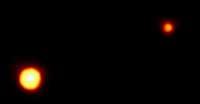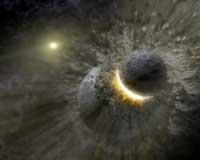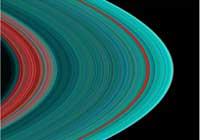The brightness of Pluto in the media

It is worth paying attention to the recent news about Pluto. The latest news indicates that you may have a ring. It would not be surprising, because there are other planets, the best known are the rings of Saturn, but also Jupiter, Uranus and Neptune have more blurred rings.
The news of the Pluto ring comes from a discovery made in May last year. It was discovered then that they found two small satellites orbiting in Pluto. The discovery was made possible by the Hubble space telescope, and these satellites were called P1 and P2, until they found more suitable names.
Keep in mind that even when Pluto is closer to Earth it is more than four billion kilometers away, too far and too dark to see it with Earth telescopes. It was first seen in 1930. Pluto has a fairly large satellite or moon: Karon. And that moon is not that they found so long, it was in 1978.

At the moment, Pluto is believed to have three moons. However, astronomers do not rule out the possibility of finding other satellites. Beginning to analyze the origin of this system, astronomers have discovered that it can have a ring of dust and ice.
NASA's New Horizons mission is currently in Pluto and will arrive in the Pluto area in 2015. To avoid accidents in the mission, you should know better this dark space environment. Therefore, they will try to see if there are rings.
Will it be the planet?
In addition, a few months ago we released a debate related to Pluto: Is it a Pluto planet or not? Well, the International Astronomy Society has made the decision: It is the planet Pluto. At least from the superficial point of view, the decision is well argued, as Pluto meets the three requirements that a planet must meet. In short, the three conditions are spherical, orbiting a star (the Sun) and not being a previous star.

But the debate has not ended. Many astronomers believe that historical reasons have had a lot of weight in this decision and now we will have to see what happens when objects larger than Pluto are found (one has already found it). Are these objects also planets? This decision will also fall to the International Astronomy Association.
This is a small summary of the news that has lately happened about Pluto. Our intention is not to propaganda NASA, but as news of Pluto arrives we will continue to pay attention to them. And it is that we are wishing to know better the planet that is there far away. And in this march we don't seem to have to wait for New Horizons to get there.
Published in 7K.
Buletina
Bidali zure helbide elektronikoa eta jaso asteroko buletina zure sarrera-ontzian











